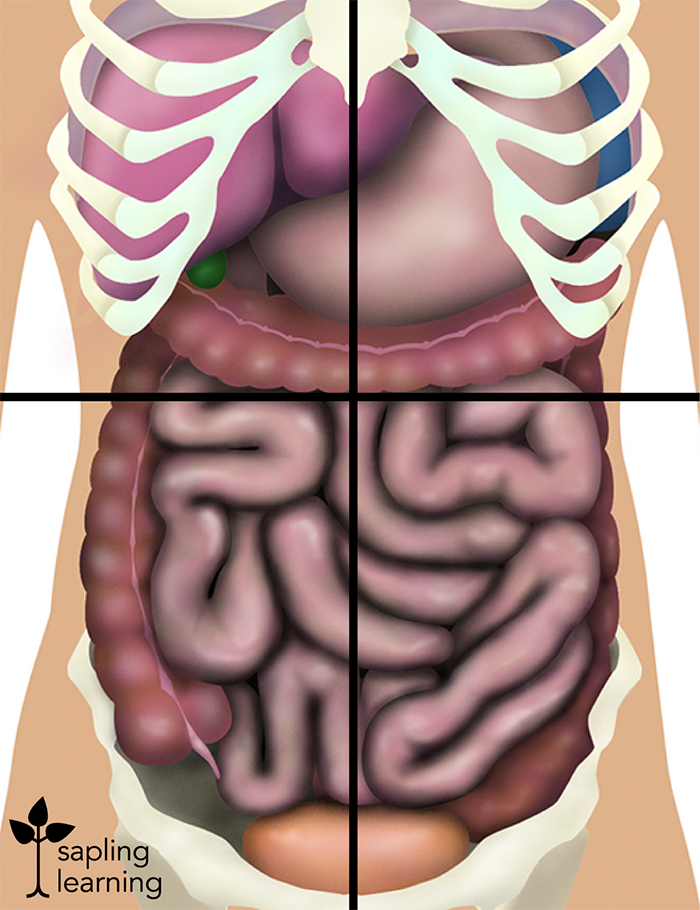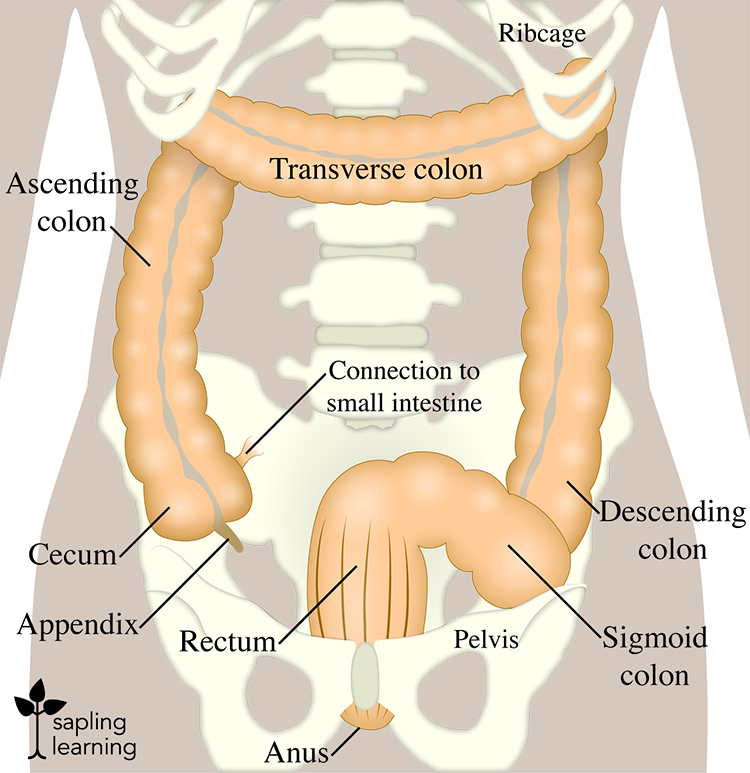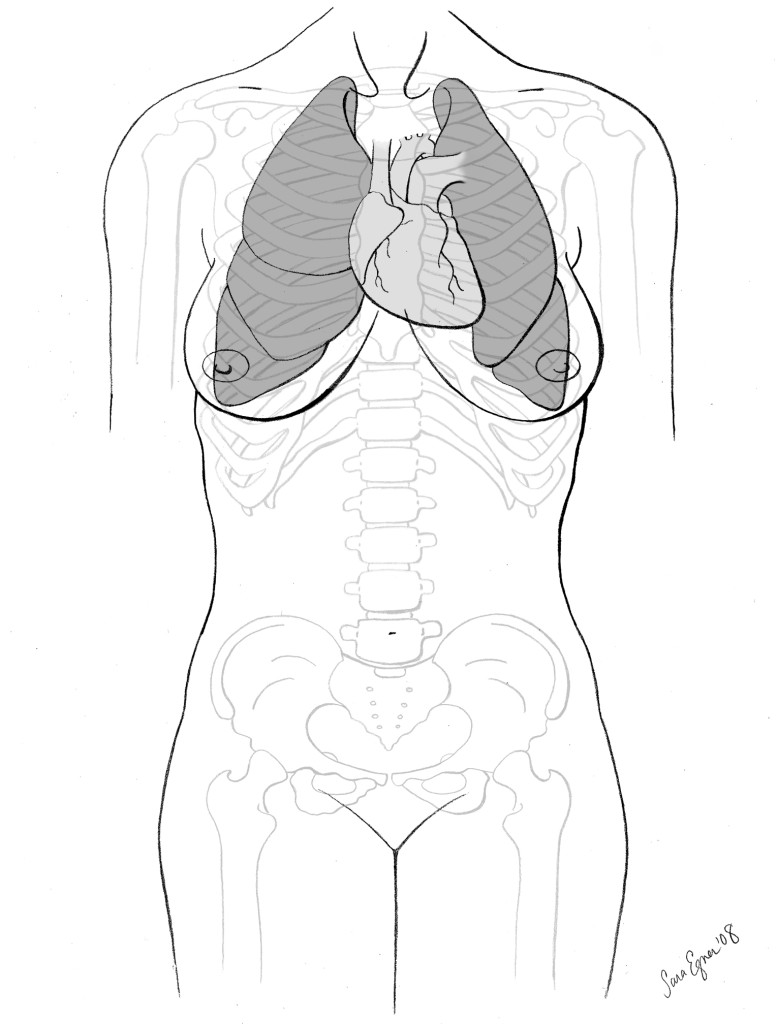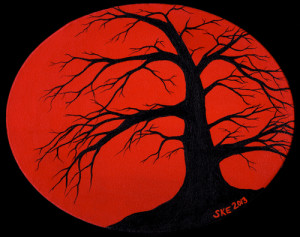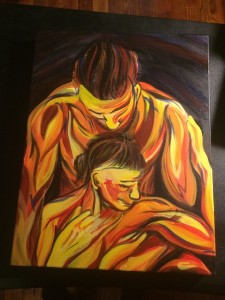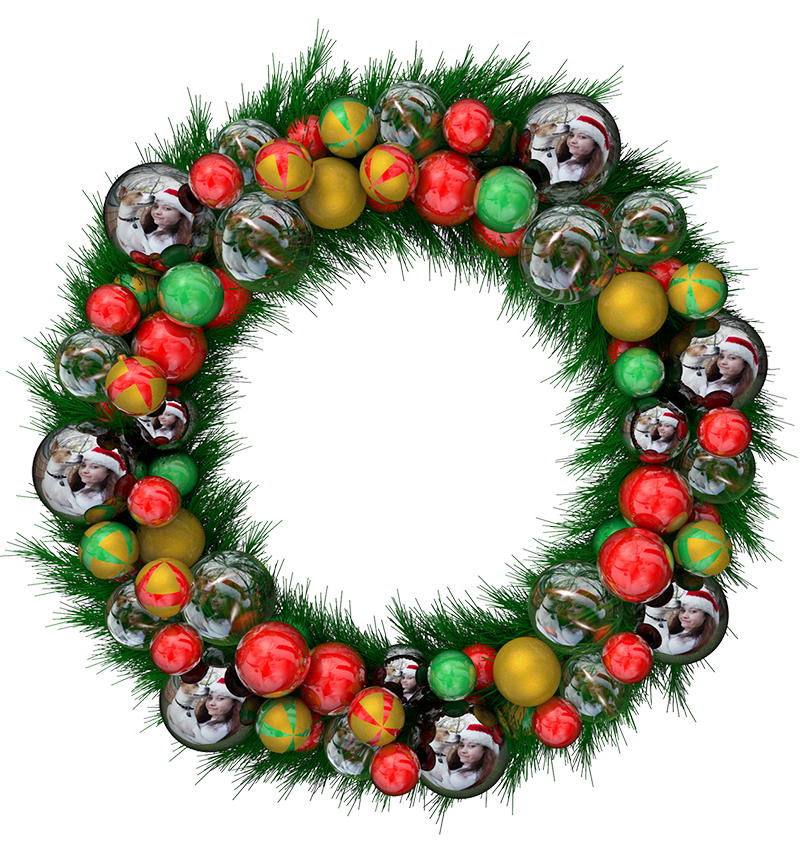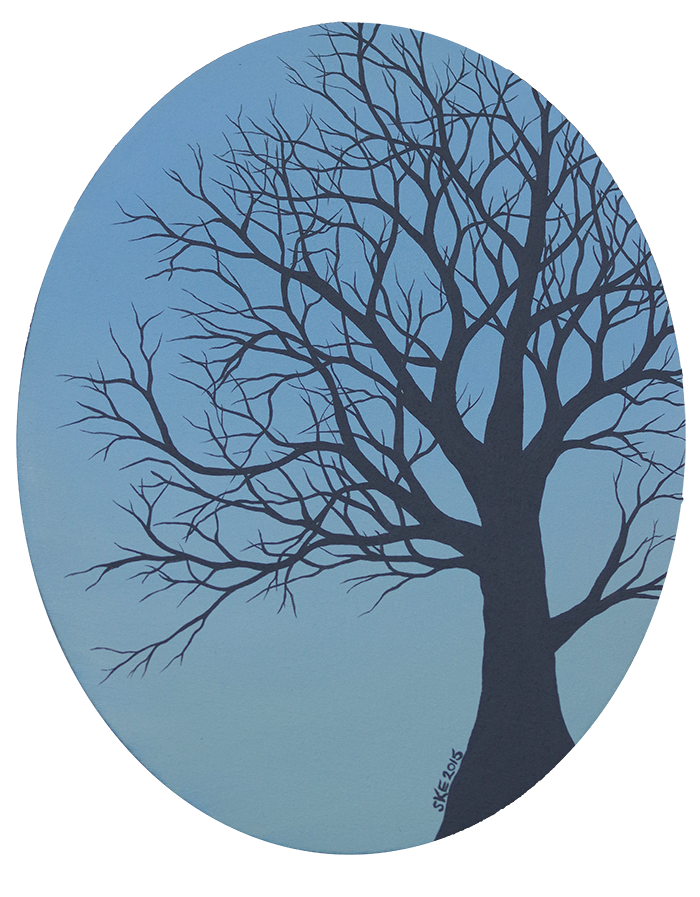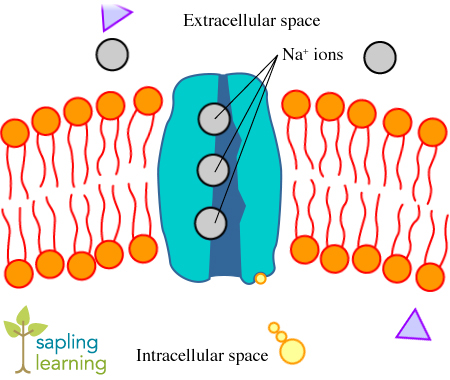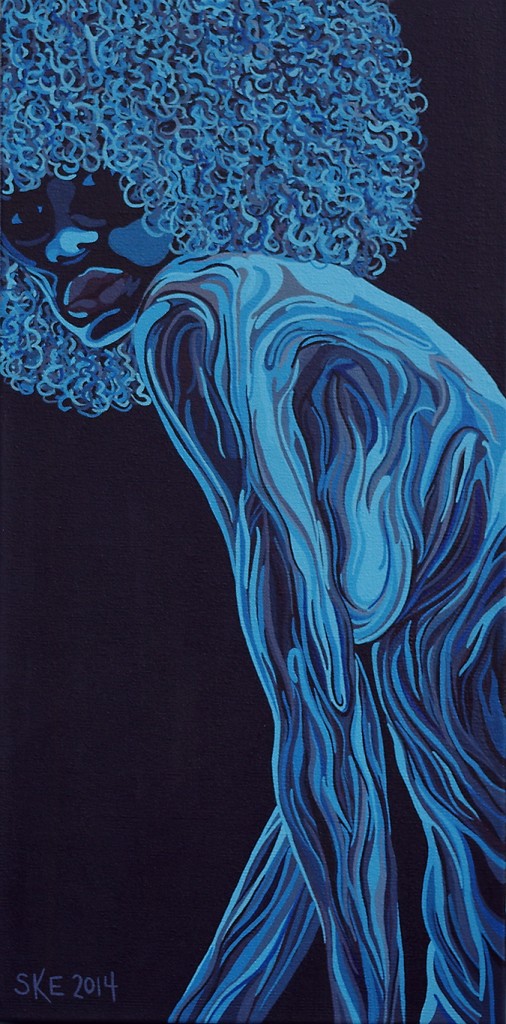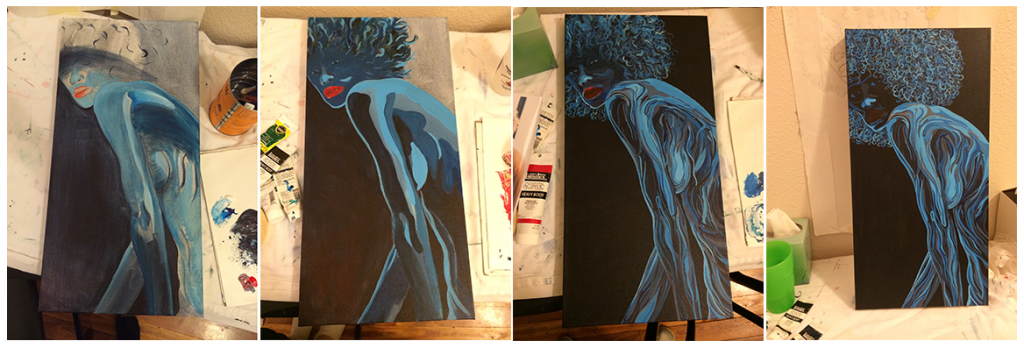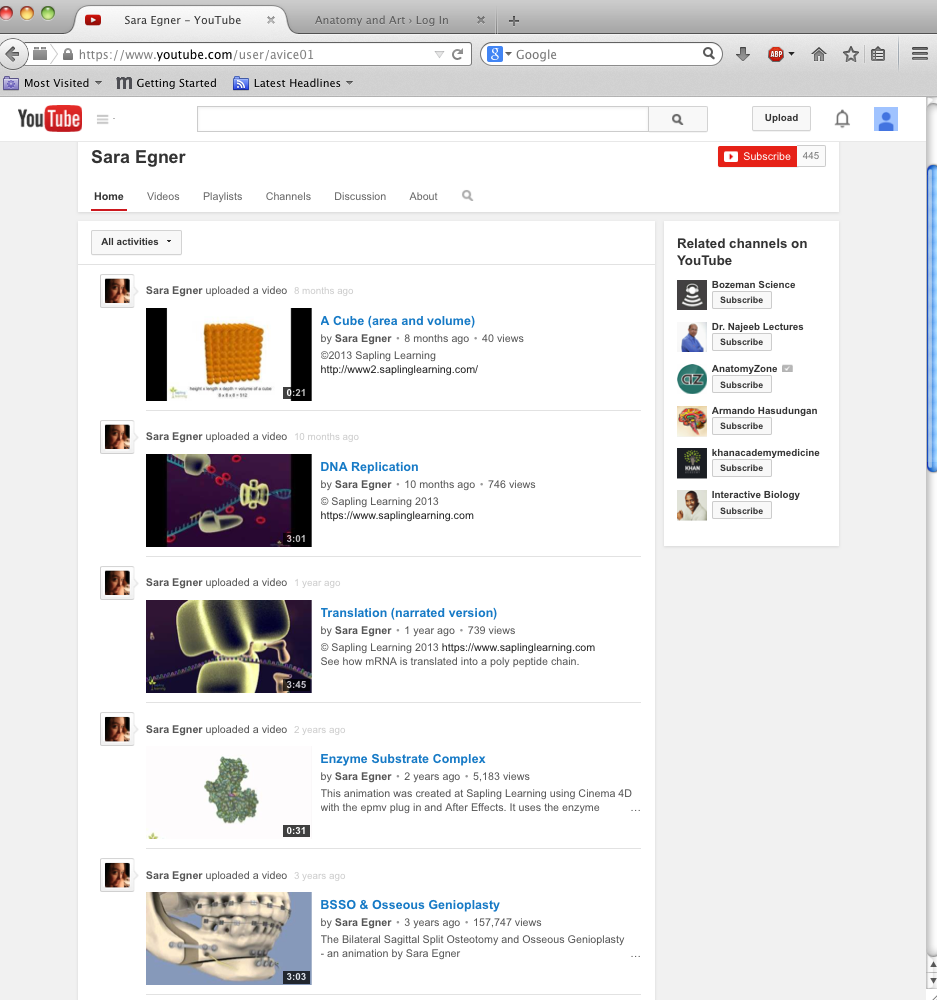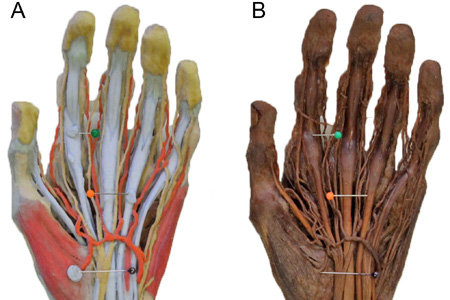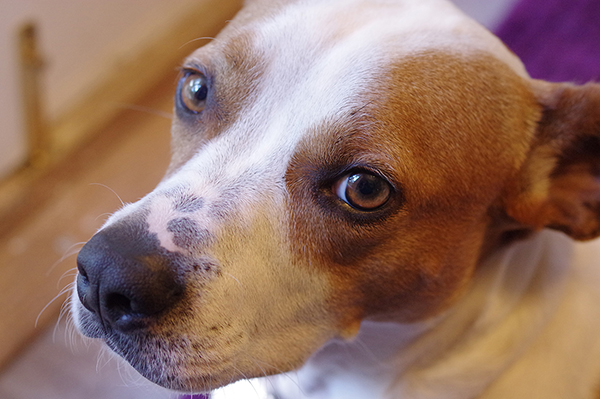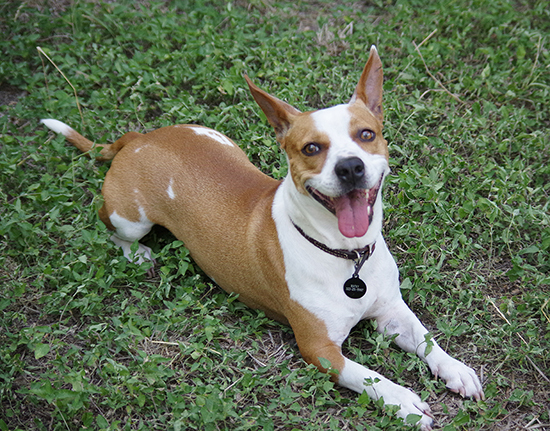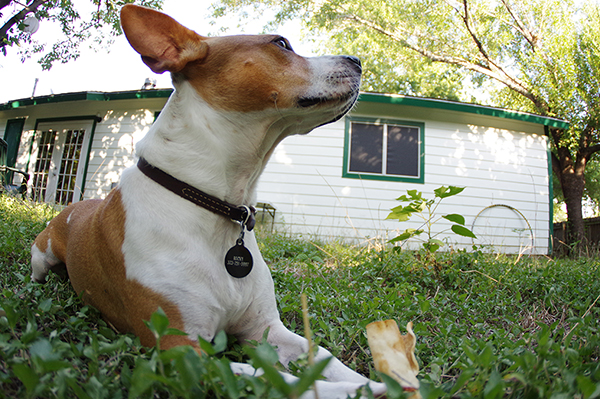Visualizing Organs
Have you ever looked at a packed bag and tried to describe to someone else the exact position of your favorite t-shirt? Without knowing the exact orientation of the bag and the viewer, words like up, down, left, or right are not so useful. Also the shape of said t-shirt becomes very important. Perhaps it’s rolled into a tight little ball and wedged into the neck of your left boot. Or maybe it’s spread out flatly between your hoodie and your jeans. Anatomists go to great lengths to accurately portray the shape and position of our internal structures. And drawing them accurately, requires attention to many landmark points.
I’ve been getting to do some anatomical illustrations lately for Sapling Learning. Most recently I was asked to illustrate the large intestine. This one was interesting because not only did we want to get the large intestine itself to be accurate, but we also wanted to show some reference to where it falls within the body. Initially we discussed another piece I made some months back regarding the four quadrants (yet another system we have to give reference within a body). This view was too cluttered to see much of the large intestine though.
But a large intestine on it’s own, offers no frame of reference at all. In fact, one of the references I saw when I was putting together our representation, tried to show a faint outline of the pelvis behind the intestine. Upon looking more closely, I realized that the artist who had drawn that one had thought that the entire large intestine was seated within the bounds of the pelvis. At one point it was suggested to me that I show the small intestine for frame of reference, but that’s the main thing causing clutter and blocking the view of the large intestine in the first image shown here. So what I wound up doing was placing it within just the skeletal system, and then I was asked to go ahead and give a body outline, much like what was in this first one. And I think that the result worked out nicely.
It’s certainly the cleanest looking intestine I have ever drawn. Something about guts in vector has always seemed a little funny to me. But I really like how this came together. And I’m so glad to have taken the time to get the spacing all right in the first place so that adding in reference points wasn’t just an exercise in pointing out what errors I’d made. In fact, a lot of my planning for this came from a piece I did back in grad school. While it didn’t feature any of the digestive track, it was a very studied placement of the skeleton within the body and I was very specific about the heart and lung placement which were shown.
That class exercise was so useful, and I’ve come back to it again and again for various things. Both the ribcage and the pelvis can be deceptive in how they sit in the body. Personally, I always think that a ribcage looks tipped forward when it’s actually upright. It’s easy to want to straighten it out for your illustration. Even knowing about this optical illusion, I still have to fight the urge myself. The pelvis is a little like that too, though one could argue that it just actually is tipped forward. But if you are holding a pelvis apart from the rest of the body it came from, or if you are looking at a photograph of a pelvis, it’s easy to want to straighten it up too.
The spine is fabulous for reference. Knowing the relationship between an organ and specific vertebra can tell you a lot. But then you also have to remember that not everyone is packed in exactly the same, and even within the same person there is a certain amount of flexibility. To return to the luggage example, we all know that the contents may shift while traveling. The diaphragm moves up and down with every breath, as does everything that it moves with it. And the act of digestion can certainly have an effect on the shape of the digestive track at any given time. And there are differences between when a person is upright or lying down. I’m sure that things sit very differently when one is doing handstands. But we find the landmark relationships that we know. And when it’s important, patients are placed into known positions and always scanned before surgery, to keep surprises in the OR at a minimum. And artists like myself go on fussing about levels and planes and curvature and just how much variety there is in the shape of a stomach, or whether to show a more taught or more draped transverse colon.
Paint
Last night I had a really good meeting with my accountant. I’d only expected to stop in for a bit, and go over the basics, how my finances looked, and what I could be doing to optimize my circumstances. Sure enough the conversation turned to life goals and career and art, and specifically my art, and he even bought one of my paintings, Tree #7.
I’ve been painting a lot these last few months. It’s always tricky finding good stretches of time around my full time work in the digital arts. But I’ve been spending a lot of nights in the studio so far this year, and that’s felt really good.
Lately my focus has been towards this one, but I still have a ways to go with it.
The art market in Austin is tricky. We have a lot of artists, and a lot of people here care about art. We don’t have much of an art market locally though. That’s why I’ve been discussing the idea of a tri-city show with a group here called the Austin Arts Collective. We’re looking to put together a show with a collection of local artists and take our pieces around to galleries in Houston and Dallas as well. I’m personally hoping for a Human Form theme, so I can highlight a few of my figures, and because there is a body painter in the group, and I’d love to see her artwork walking around on models at our shows. I’ll definitely post more on that as it comes together.
All in all, this feels like a time of focus with my art work. And last night’s conversation was just the push I needed to get me thinking about the bigger picture with all that again.
Update
Well, while things may not look any different, welcome to the newly hosted AnatomyAndArt.com! With Speedy Puppy closing it’s doors in a couple of months, I’ve been making the transition over to A Small Orange, a web hosting company run right here in Austin. So far, everything seems to be working. So yay!
A lot has happened since my last post here. Since my last post here, my mother was diagnosed with cancer. That’s been huge, and just a real crash course in cancer treatments, ER failings, ICU care, neurosurgery, and all of that. I suppose I haven’t really had it in me to write about all that.
I also gave that talk to the 8th graders for career day. And that was so worth doing, both for the reflection it gives you on one’s own path, but also for the connection you make with the up and coming generation. If anyone ever asks you to do this, I have to recommend going for it.
The holidays have also come and gone. I actually had a cute little Xmas card this year, created in 3D that I’d intended to share here. I suppose I could go ahead and do that now belatedly. Rocky and I do wish you all love and warmth for the holiday season, and future seasons as I’m not getting this up until January.
I also finished another painting. I think it has a buyer in California already. And I started another one too. So it’s been a very paint heavy beginning to the New Year. And then just last night I met up with some fellow artists in Austin and we discussed potentially building a show to take our work into a couple of cities. I’m loving the idea, and really hoping that it comes to fruition.
And so I suppose I’ll leave you with an image of the latest painting, and return with images on the one in progress as it gets further along. Introducing Tree #8
What is your career title?
So it would seem that I’m agreeing to speak about what I do for a living to groups of 8th graders in Plano next month. Whatever will I say?? The first question already had me stumped – “What is your career title?” I’m going with Scientific Artist / 3D Animator. Titles are tricky for me though. My last business card before joining Sapling Learning was literally a collage of skills on the back.
Most 3D animators out there, lead with that. It’s a specific skill and one that tends to be better paid than 2D animation or any kind of illustration. And if you don’t say the 3D part, then people will generally assume that you don’t do it. But the truth is, that I also do 2D animation, and I also do both 2D and 3D illustration. Add to that, that it’s also worth specifying that I’m also focusing in scientific animation and illustration, oh and sometimes photographs or very occasionally video. Which would make me a Scientific 3D/2D animator/illustrator/photographer or something like that. Now try adding in that I studied specifically in medical illustration and animation. Yeah, it gets complicated. Personally, I would like to see the word artist taken more seriously. I think that “scientific artist” most plainly expresses what it is that I do. But no one would think that I did animation if that were my title, and they certainly wouldn’t think 3D animation. They would definitely not think that I had a background in anatomy. And then yes, there’s the issue that people often have a kind of mental block when it comes to paying for art. When I was more active with the Association of Medical Illustrators, I was around for several conversations about potentially changing the group’s name to be more inclusive to our many animators. But while the term “medical artists” would have been more inclusive, many feared it would sound less technical and could actually affect what people were willing to pay for that expertise. And they were right to be concerned.
So I’m going with Scientific Artist / 3D Animator for the kids next month. This isn’t a paying gig, but students interested in animation should get a chance to know that I’ll be including that in my talk. Now, to narrow down just what exactly I am going to talk about while I’m up there. As long as they leave knowing that math is important in art, I’ll feel like I’ve done something right. And if I can bring their attention to the spaces between science, technology, and communication, then I’ll feel pretty good about that too.
 My business card, mentioned above. I still like this one too.
My business card, mentioned above. I still like this one too.
The Sodium Potassium Pump
I recently worked with Laura Crothers to create a representation of the sodium potassium pump. I’ve attached a labeled still shot here, and the full animation is attached at the bottom. We decided to show this process by creating a looping animation that students could watch, and then continue to watch for specific details while answering questions. The animation itself was created in Illustrator and After Effects and loads into our IBIS pages as a looping swf. The style was intentionally minimized for clarity, and uses some common portrayals of the sodium and potassium ions. By creating an ongoing looping animation, the process is able to be taken in gradually by the student and then focused on in specific ways as lead by the questions, or by an instructor. Students may focus at one point on the chaotic nature of ions bouncing about throughout the process and that only the right fitting ion is transported across the cell membrane. Or they may choose to focus on the timing of ATP to release the trapped potassium ions and collect new sodium ions for release outside of the cell. Laura was even able to find out the exact point in the process where the single phosphate releases, so that we could include that level of accuracy in our portrayal.
I think this animation will be a strong teaching tool for students who are learning about this process. The bright colors and clean lines make it appear less complicated (a style that Amber Jonker helped establish in previous work on the cell membrane), but the cycling view allows students to absorb further levels of complexity on repeat viewing. A student may or may not notice that one sodium ion is released and only then do the other two release when the sodium ions are released to the extracellular side. But if a professor wants to talk about that nuance, the stage is set for that conversation. Or if a student is focusing on the basic sodium out and potassium in exchange, they can keep their focus there.
This video embedding shows a single loop of the animation, which runs two cycles of the pump.
Introducing Blue Woman
New Painting in the Works
Lately I’ve been working on another painting. You might say I’ve been a little obsessed. She’s not quite there yet, but I wanted to share a few shots of my process so far…
It’s still got a little ways to go, but I’m excited about her.
YouTube Flattery
I’m so touched, YouTube just suggested that Khan Academy offered a similar channel to mine! I know it’s just an algorithmic association based on providing educational content, but I can’t help feeling flattered.
3D Printed Anatomy
Monash University in Australia is releasing their new 3D printed anatomy series. The press release is here… http://www.monash.edu.au/news/show/3d-printed-anatomy-to-mark-a-new-era-for-medical-training
And if you can access the full article, more details about it are published here…
http://onlinelibrary.wiley.com/doi/10.1002/ase.1475/abstract
And I first heard about it through Meddeviceonline’s article which contains the following photo. If that is an actual comparison of cadaver and the plastic version being made by Monash, well that’s really impressive…
http://www.meddeviceonline.com/doc/world-s-first-d-printed-cadaver-could-revolutionize-medical-education-0001
Most of these articles talk about the value of having these models as a replacement for human dissection all together in classes. I don’t think that a complete replacement will ever be a good idea, certainly not anytime soon. But a really accurate model like this, could be incredibly valuable used in addition to cadaver studies. Which leaves me wondering exactly how they’re getting it.
The abstract of the scholarly article mentions injecting contrast into specific anatomy to highlight it for the scans. That would certainly help, but I’ve seen enough CT data to know that it’s going to come out with a lot of mess too. Whoever is going through and isolating this piece from that and isolating the model is doing a fine job of it. That’s for sure.
I’ve had a bit of fascination for the last couple of years with the idea of making educational models that can be printed out in 3D on the user’s part. This is definitely more complicated than that, and they are not suggesting that students try to print their own. But I feel like that’s around the corner. And it’s exciting.
New Camera!
Well, I did it! I finally bought a new DSLR camera to replace the Canon 20D taken by the burglars in February. I know that I wrote about the shopping process a bit in my last post. Well, I wound up going with the Pentax K3. It’s amazing. Not only has camera technology come a long way in the twelve or so years that I’d had my old camera, but Pentax has apparently been making some of the hardiest cameras around for a long time now. It sounds like I can take this thing out into a rainstorm, dust storm, let it knock about a bit, and it’ll just keep working.
I once again have three lenses. Somehow I always wind up with three. In my film days with my old Pentax K1000, I had a wide angle lens, a standard lens, and a telephoto lens. With my Canon20D I had a standard /zoom, a telephoto, and a macro lens. Well this time I definitely wanted another macro lens. Then instead of going standard/ zoom I went more telephoto light, which serves a similar niche with more zoom than my old standard /zoom but not as much as my old telephoto. I think it’ll be fun to have that go between there though. And then lastly, I picked up a fisheye as my specialty lens, and I love it!
To show off these lovely lenses, I’ll have to utilize the help of my lovely assistant, Rocky the Dog…
First we have the macro lens, and man do I love these things. Getting closer to your subject you get a narrower and narrower depth of field, which means you have to get the focus right, but when you do, the attention goes right there.
Next that basic lens that is standard enough at 55, but telephoto enough at 200 too.
And lastly, we have the fisheye. And can I just say… so… much… fun…
I think that this new camera and I are gong to get along very well. And to anyone out there camera shopping, let me give you a nudge towards Pentax. They always made a good solid film camera, and I didn’t know it until recently, but they really have kept innovating into the digital world. The K3 is a brilliant camera. But I even considered their lower end K-50 as well. This brand is well worth a look if you’re in the market.
